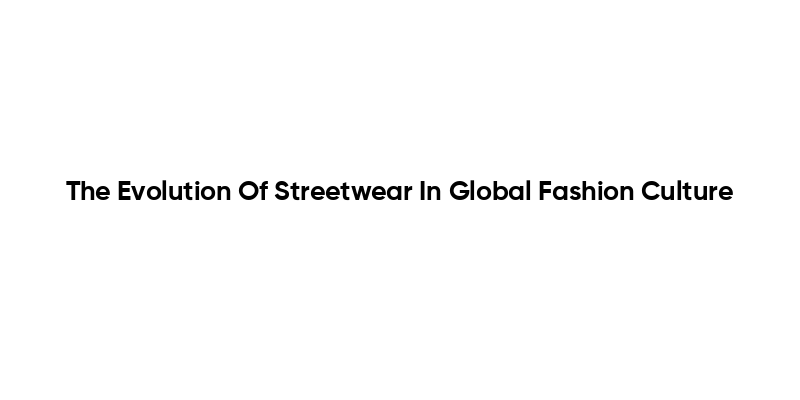Women designing for women is quickly becoming a transformative movement in the UK fashion landscape, breathing new life into the high street. With an increasing number of female designers taking leadership roles at notable UK fashion brands, this dynamic change is reshaping design philosophies across the industry. Industry giants like Whistles and Marks & Spencer are thriving as they embrace the creativity and insights of women at the helm, allowing for products that resonate deeply with their female consumer base. As designers like Jacqui Markham and Clare Waight Keller introduce fresh fashion design trends, their unique perspectives are projected to drive demand for relatable and wearable pieces. This shift is not only revitalizing brands but also setting a standard for women’s representation in leadership positions across fashion.
The influence of women in fashion is not just a trend; it’s a revolutionary approach leading to the emergence of female-led design. Current shifts in the fashion industry highlight how female creatives are redefining styles that cater specifically to women’s needs and preferences. This recent focus on women creating for women empowers both designers and consumers, aligning the product offerings of popular high street brands with the genuine lifestyles of modern women. As these talented designers bring their visions to life, the fashion landscape witnesses a rise in innovative and relatable clothing options. With an increasing emphasis on inclusivity and shared experiences, this movement is poised to change how we perceive fashion and its designers.
Empowerment Through Fashion: Women Designing for Women
The trend of ‘women designing for women’ is reshaping the landscape of the UK high street fashion. Female designers, with their unique perspectives and experiences, are stepping into leadership roles that allow them to create clothing tailored to the real needs of women. This movement is not merely about aesthetics but fosters an understanding of what female consumers genuinely desire, resulting in a more relatable and responsive fashion offering. Designers like Jacqui Markham at Whistles and Maddy Evans at Marks & Spencer embody this shift, bringing their expertise to the forefront and creating a vital connection with their target audience.
Furthermore, the rise of initiatives that champion female leadership in fashion creates a ripple effect across the industry. With roles traditionally dominated by men now increasingly occupied by women, brands are witnessing a revitalization. Such a dynamic is crucial in ensuring that the voices of women are heard in spaces that significantly influence their everyday lives. This wave of female-led brands is indicative of a broader societal shift, illustrating that when women lead, they not only elevate their brands but also enhance the shopping experience across high street fashion.
The Influence of Female Designers in UK Fashion Brands
Female designers are fundamentally altering the identity of UK fashion brands, such as Whistles and Uniqlo. With seasoned professionals at the helm, these brands are producing innovative designs that not only capture attention but also address practical needs. For instance, the recent collaboration under the leadership of women has led to viral product launches, indicating how effectively these designers resonate with target demographics. This surge of popularity highlights the need for strategic hiring practices that prioritize diversity and understanding of female consumers.
Moreover, with UK fashion brands now prioritizing female leadership, there’s potential for a more authentic representation in fashion design trends. Creators like Clare Waight Keller at Uniqlo infuse their background and vision into their work, exemplifying how gender diversity at top levels can significantly impact brand perception and product offerings. As the Chinese proverb suggests, ‘Women hold up half the sky,’ embodying this in retail design translates into more thoughtful, inclusive, and ultimately successful fashion collections.
Revitalizing High Street Fashion: The Role of Women in Leadership Roles
The revitalization of the UK high street is closely linked to the emergence of women in leadership roles within fashion brands. Retail giants like Marks & Spencer and Cos are witnessing renewed success attributed to their female-leading design teams. These leaders are not just steering artistic direction; they are reimagining how brands engage with their customers. The narrative around shopping is shifting, and when women are at the decision-making table, brands can create products that truly cater to their consumers’ desires, blending style and functionality seamlessly.
As Catherine Shuttleworth emphasizes, women possess unique insights into how females think, shop, and behave in retail environments. This intrinsic understanding is invaluable in establishing a loyal customer base. Brands that leverage such insights to drive strategic growth and innovation will undoubtedly thrive in a competitive marketplace. Women in leadership roles are not only changing the creative landscape but also redefining success in the retail sector, demonstrating that a diverse leadership team can lead to more nuanced product development.
Fashion Design Trends Shaped by Female Perspectives
The influence of female designers on fashion design trends is increasingly evident as new collections emerge from brands like Uniqlo and Whistles. The nuances brought to the table by women designers reflect a deeper understanding of contemporary women’s needs in everyday wear. Ideas such as comfort, versatility, and inclusivity have become pivotal in recent collections, making fashion more accessible while also stylish. It’s an exciting era where the narrative surrounding female consumers is further explored through thoughtfully crafted designs.
Moreover, as women are often the primary decision-makers in their fashion choices, the importance of their input in design trends cannot be overstated. Current trends showcase an inclination towards sustainable materials, practical silhouettes, and an overall push towards more ethical fashion practices. The design ethos introduced by female leaders like Maddy Evans echoes broader cultural shifts towards conscientious consumerism. These trends not only impact visual aesthetics but also challenge the fashion industry to adopt more sustainable approaches that support women’s empowerment.
Building Community: Female Designers Leading Change
Community engagement is becoming an essential focus for fashion brands under female leadership. Women designers are not only curating items for sale but are also fostering spaces where female voices can be uplifted and celebrated. By prioritizing collaborations with other female-led initiatives and brands, they create a powerful network that goes beyond just the product, emphasizing shared values and experiences that resonate deeply with their consumers. These collaborations yield collections that tell compelling stories, therefore forming an emotional connection that is critical for modern brands.
Additionally, as women designers lead creative initiatives, they often include community-driven strategies in their brand missions. By involving customers in the design process through feedback mechanisms or even participatory design workshops, brands are forging stronger bonds with their customer base while ensuring that their offerings reflect genuine desires. Such approaches not only invigorate the brand’s image but also foster a sense of belonging and loyalty among consumers, redefining how high street brands interact with the public.
Navigating Challenges: Women Designers in High Fashion and High Street
While the rise of women designers in high fashion is commendable, challenges remain in truly reshaping the industry. The appointment of women like Waight Keller is a step in the right direction; however, the concern remains that women may be categorized into simplistic roles without the creative freedom to innovate beyond traditional design narratives. This can lead to oversimplifications that pigeonhole female talent in utilitarian designs rather than allowing for the full expression of their aesthetic creativity across various demographics.
Moreover, the stark contrast between high fashion and high street is diminishing. Female designers migrating from haute couture to accessible fashion are bridging gaps that previously dictated separate realms. However, brands must remain cautious of limiting their female talent to specific roles rooted in notions of practicality over creativity. True progress will come when the industry acknowledges the multifaceted capabilities of women designers, creating a culture where diversity is celebrated and leveraged to craft a new lexicon in fashion.
Sustainable Fashion Initiatives Driven by Women in Leadership
Sustainability is a pivotal theme in contemporary fashion discussions and women designers are at the forefront of enforcing these values within UK fashion brands. Female leaders are actively advocating for sustainable practices, from eco-friendly materials to ethical production processes, creating an industry standard that not only appeals to environmentally conscious consumers but also sets a precedent for future developments in fashion. These initiatives are increasingly recognized as fundamental to brand identity in today’s market.
By championing sustainable fashion, female designers are leading the charge in redefining what responsible consumerism looks like. Their unique perspectives and ethical considerations drive brands to develop strategies that align with the growing demand for sustainable products. Customers are more likely to trust brands that demonstrate a commitment to social responsibility, and this trust translates into loyalty. Women’s leadership in this domain promises to foster innovative practices that not only benefit fashion brands but also contribute significantly to environmental stewardship.
Leveraging Technology: The Future of Fashion Design by Women
As technology continues to evolve in the fashion realm, women designers are skillfully integrating innovative tools to enhance their designs and elevate the consumer experience. From digital fabric printing to advanced supply chain logistics, female-led brands are adopting these technologies to create fashion that is both cutting-edge and conscious. Embracing tech has empowered female designers to personalize their collections to a degree previously unseen, aligning closely with consumer desires and market trends.
Moreover, the digital landscape provides a powerful platform for female designers to showcase their work, connect with audiences, and drive engagement. By leveraging social media and e-commerce strategies, they are not only reaching a wider audience but also fostering communities that support and celebrate female talent. As the future of fashion unfolds, the intersection of technology and fashion design led by women is set to revolutionize how products are made, marketed, and consumed, ensuring a vibrant and inclusive future.
The Impact of Female Creativity on Brand Identity and Consumer Loyalty
At the heart of any successful fashion brand is its identity, which is increasingly being shaped by women in creative leadership roles. These female designers bring a fresh approach to branding that resonates with contemporary audiences. With their perspectives embedded in creative processes, the result is a brand image that feels authentic and relatable. When consumers connect emotionally with a brand, their loyalty is significantly increased, leading to sustained growth and brand advocacy.
Furthermore, as women lead the narrative and maintain an open dialogue with their customers, they are better positioned to build a community around their brand. This sense of belonging is crucial in a market saturated with options. By prioritizing the consumer experience and adapting to needs as expressed by their audiences, female-led brands are able to foster deep connections that translate into long-term success. This approach signifies a shift in how brand loyalty is cultivated, highlighting the importance of empathy and understanding in brand management.
Frequently Asked Questions
How are female designers influencing UK fashion brands?
Female designers are playing a pivotal role in shaping UK fashion brands, particularly in high street fashion. With women in leadership roles, such as Jacqui Markham at Whistles and Maddy Evans at Marks & Spencer, these brands benefit from insights and lived experiences unique to women’s needs and preferences, leading to more relatable and successful product offerings.
What impact does ‘women designing for women’ have on consumer trends?
The trend of women designing for women is transforming how brands connect with their audiences, especially in the UK high street. This approach leads to designs that reflect the everyday needs of women, resulting in products that resonate more deeply with consumers, driving sales and customer loyalty.
Why is it important to have women in leadership roles within fashion design?
Having women in leadership roles within fashion design is essential as they bring diverse perspectives that enhance creativity and innovation. Their experiences allow brands to create designs that better cater to female consumers, thus boosting engagement and sales in competitive markets like UK high street fashion.
How are UK high street fashion brands adapting to the presence of female designers?
UK high street fashion brands are adapting to the presence of female designers by prioritizing a consumer-centric approach in their designs. With leaders like Clare Waight Keller at Uniqlo, brands are focusing on styles that resonate with modern women’s lifestyles, leading to revitalized collections and increased brand relevance.
What role do female designers play in shaping fashion design trends?
Female designers are instrumental in shaping fashion design trends by bringing fresh perspectives to classic styles and introducing innovative elements that address current consumer demands. This shift, particularly visible in UK high street fashion, emphasizes functionality while retaining style, catering to the diverse needs of women.
How does ‘women designing for women’ improve brand authenticity?
‘Women designing for women’ enhances brand authenticity as it fosters a genuine connection between designers and their target audience. This alignment allows brands to produce clothing that reflects the true essence of their consumers’ lifestyles, distinguishing them in the saturated UK fashion market.
| Brand | Key Female Designer | Recent Changes or Strategies | Impact |
|---|---|---|---|
| Whistles | Jacqui Markham (ex-Topshop) | Hoping to revitalize brand after past decline | Aims to understand customer needs better through lived experiences. |
| Marks & Spencer | Maddy Evans (promoted to director of womenswear) | Promoting female leadership in creative roles | Increased visibility and appeal in the market. |
| Uniqlo | Clare Waight Keller (ex-Givenchy) | Bringing luxury experience to high street | Gaining recognition and popularity through quality products. |
| Cos | Karin Gustafsson (since 2006) | Consistency in design leadership | High street favorite leading to sales boost. |
Summary
**Women designing for women** is a trend that is reshaping the UK high street, as brands like Whistles, Marks & Spencer, Uniqlo, and Cos embrace female leadership in their design teams. This movement not only enhances the understanding of female consumers but also drives brands towards creating relevant and appealing products. As the fashion industry continues to evolve, the influence of women in key creative positions is undoubtedly bringing freshness and vitality to the high street.



